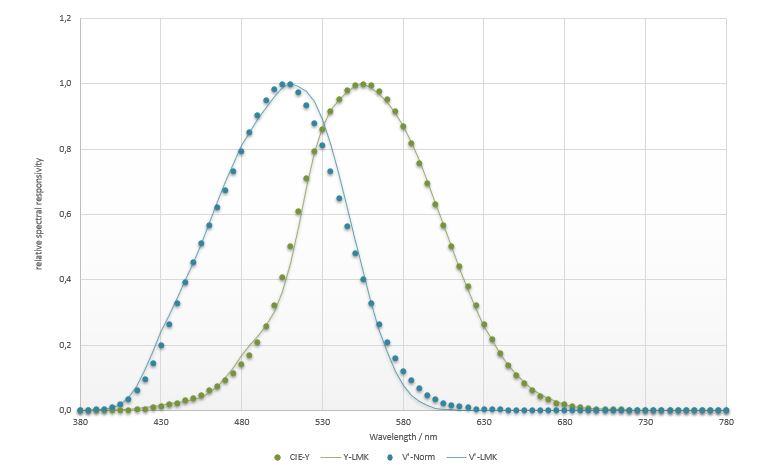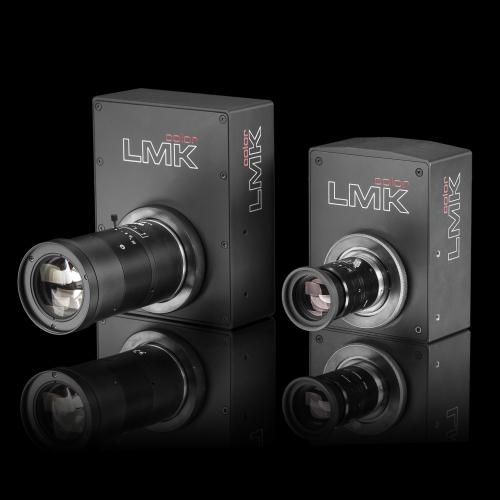Scotopic Vision

In the study of human visual perception, scotopic vision is the vision of the eye in low light and darkness. In low light with dark-adapted eyes, only the rods of the retina are actively involved as light receptors. The more light-sensitive rods have a different spectral responsivity than the cones, which enable color and daytime vision. For this reason, further spectral adaptation to V'(λ) is necessary to measure scotopic brightness perception. This function describes the spectral light sensitivity of the rods.
An illumination situation is measured with a photopic filter. If the same situation is additionally measured with a scotopic filter and both images are combined, the lighting situation can also be evaluated for the mesopic vision range. Mesopic vision is the light sensitivity at dusk or twilight, where both rods and cones are simultaneously involved in our visual perception of brightness.
The measurement data is provided in such a way that local differentiation of the perception areas (photopic, scotopic, or mesopic) is easily possible. To distinguish the perception areas from each other, different perception models can be used to delimit perception areas.
Our solution
With the LMK color, photopic and scotopic light perception can be made available in one measurement data set. This makes it possible to evaluate the measured light situation according to mesopic perception models. This function is provided with the optional filters of the LMK color.

